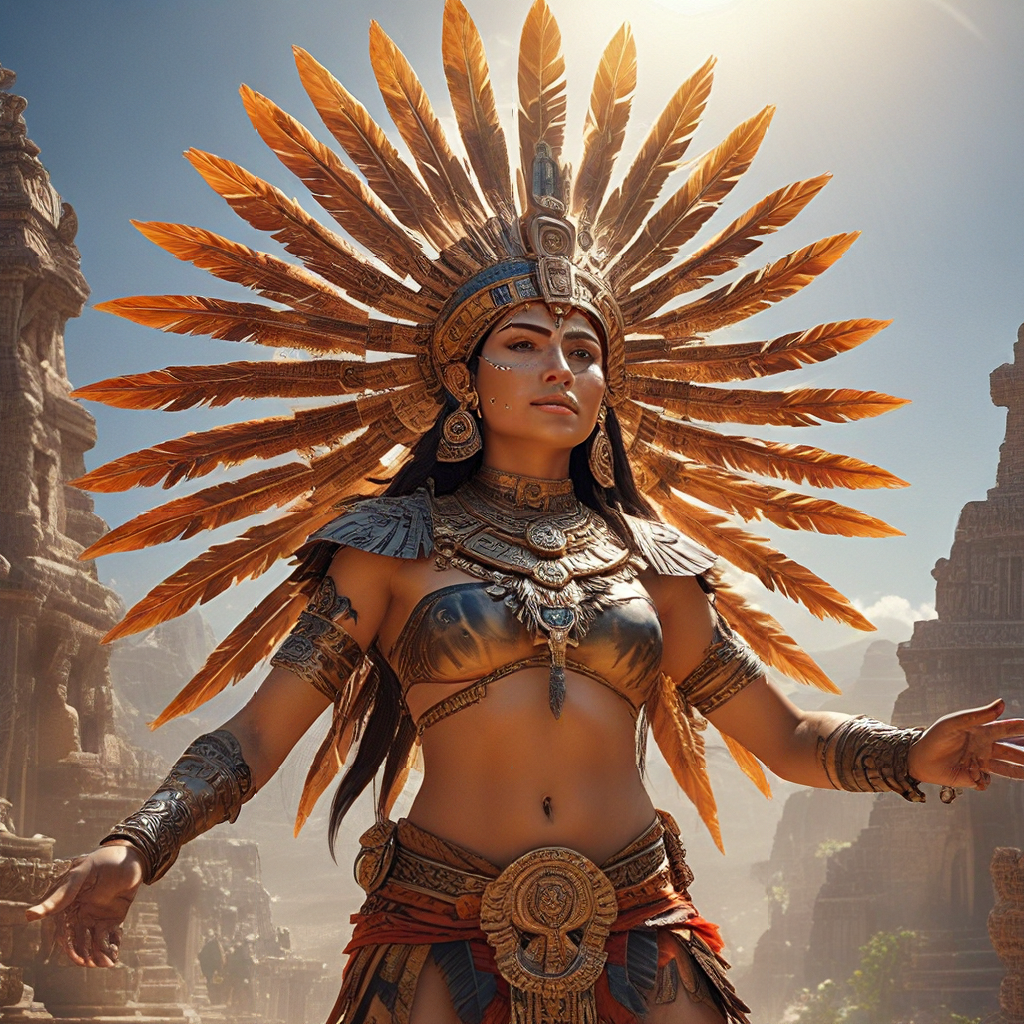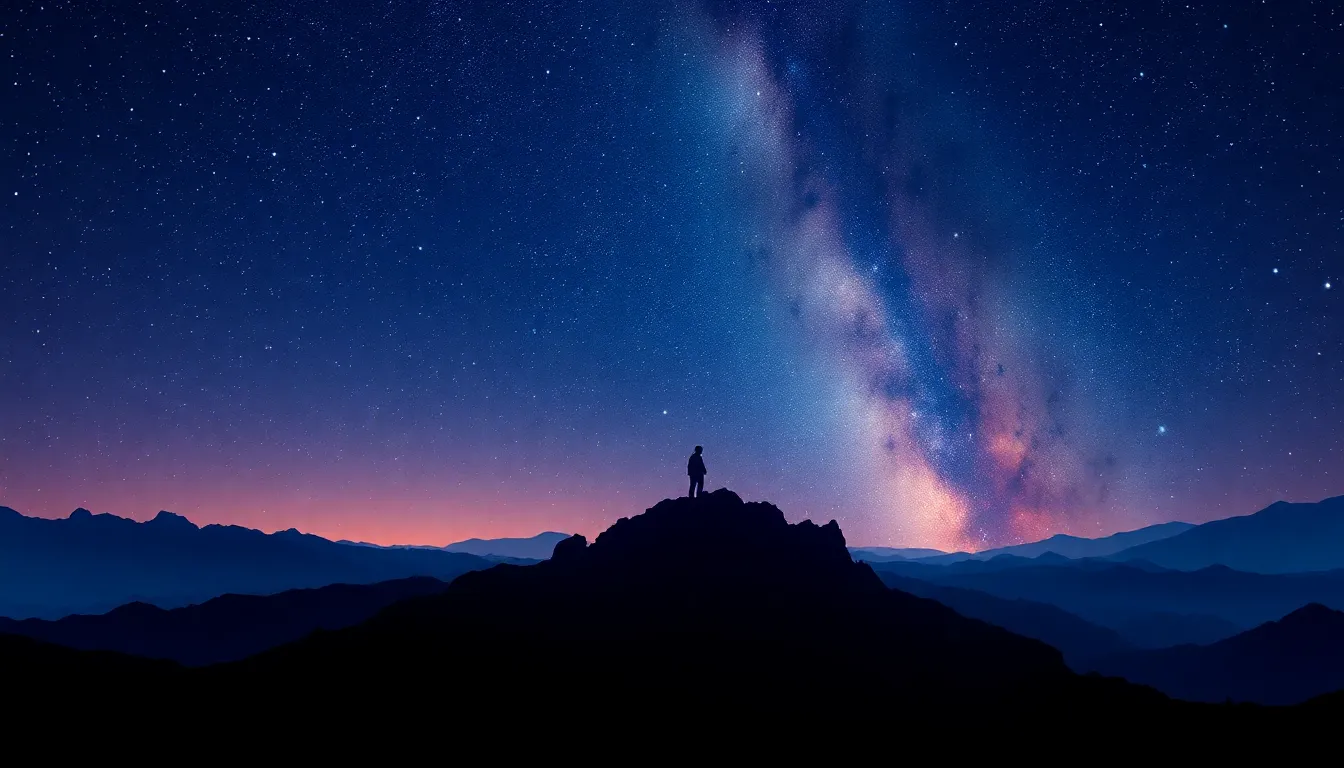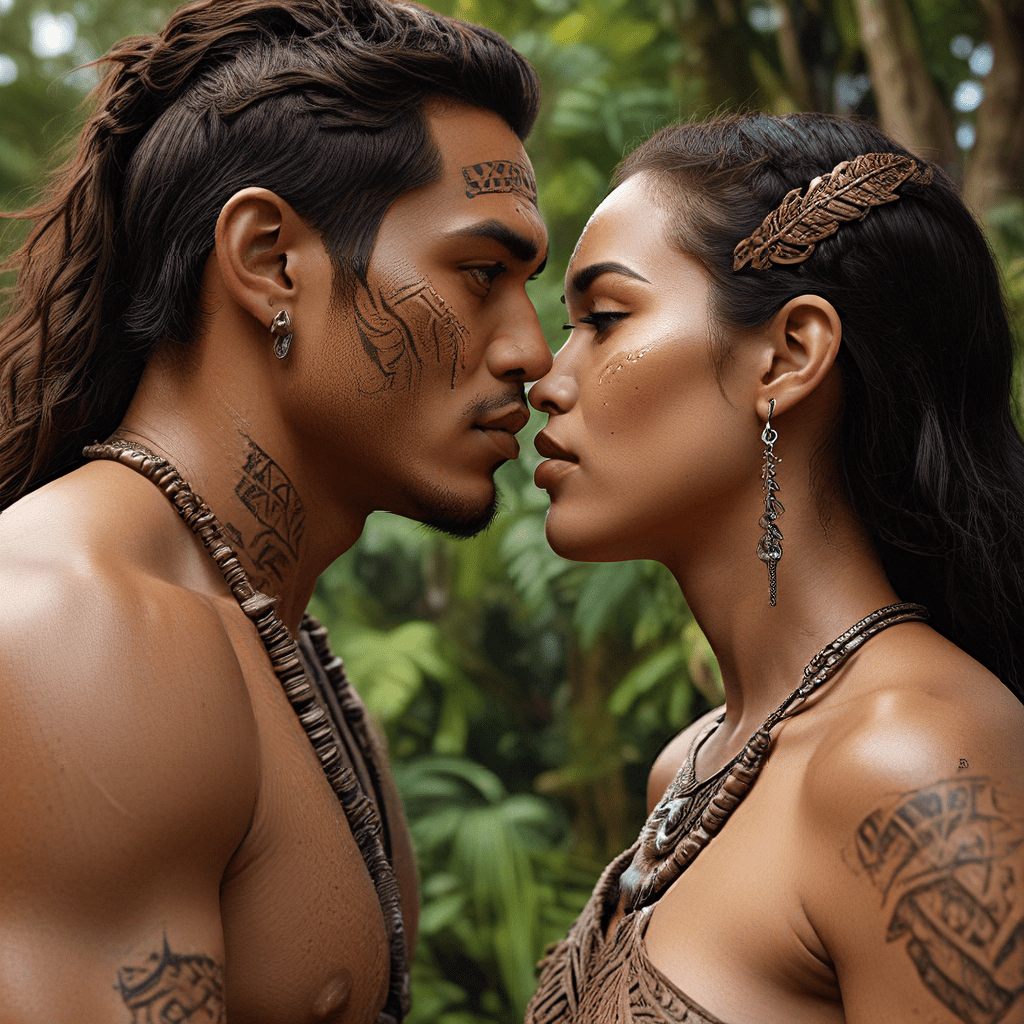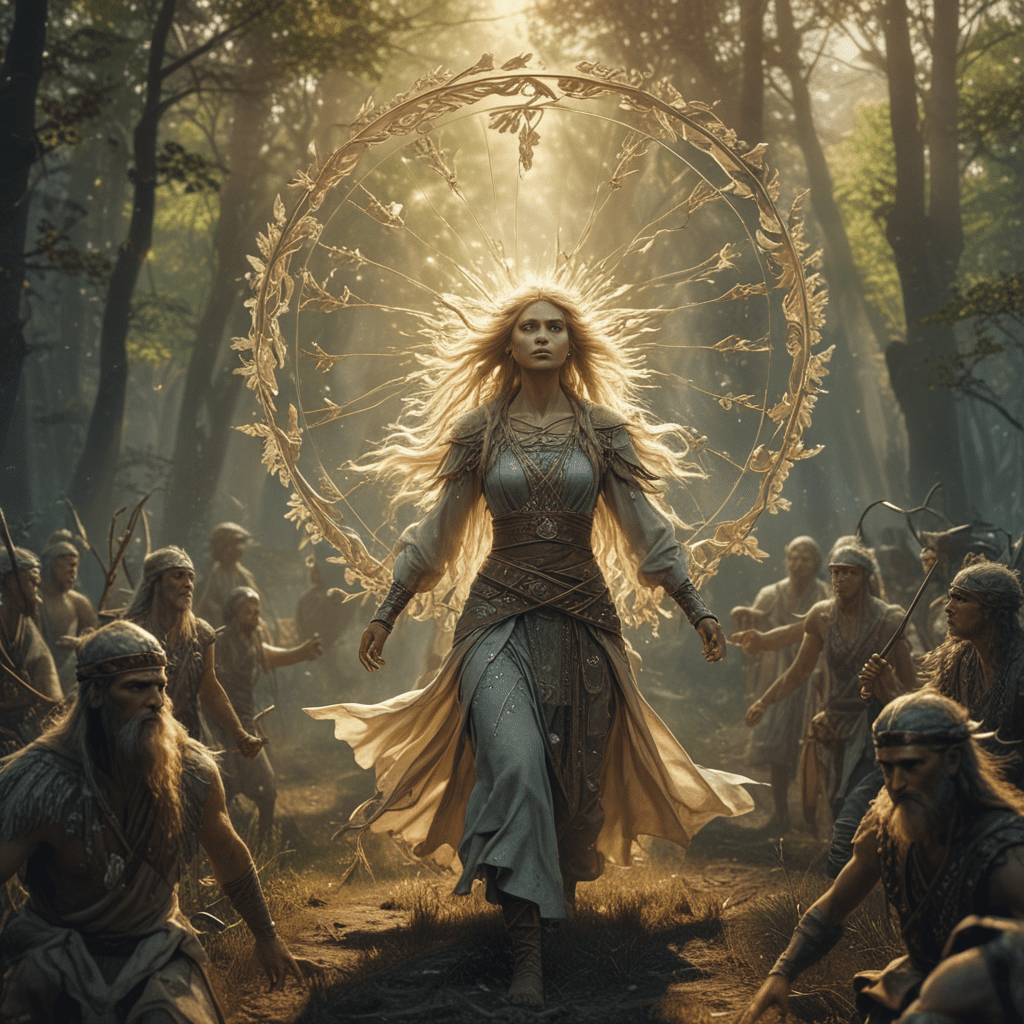The Aztec Cosmology: A World Shaped by the Sun and Moon
The Aztec civilization, known for its intricate calendar, advanced agriculture, and awe-inspiring architecture, also possessed a fascinating mythology deeply rooted in the celestial bodies of the Sun and Moon. Their beliefs about the creation of the world, the cycles of life and death, and the very essence of human existence were intertwined with the celestial dance of these two powerful deities. The Aztec cosmos was a vibrant tapestry woven with stories of gods, heroes, and mythical creatures, all influenced by the Sun and Moon's unwavering presence in the sky.
The Divine Couple: Tonatiuh and Coyolxauhqui
At the heart of Aztec mythology lies the divine couple: Tonatiuh, the Sun God, and Coyolxauhqui, the Moon Goddess. These celestial beings were not simply objects in the sky but powerful deities who played crucial roles in the creation, maintenance, and sustenance of the universe. Tonatiuh, a fierce and radiant god, was revered as the source of life, warmth, and energy. His daily journey across the sky brought light and warmth to the world, fostering the growth of crops and sustaining life. Coyolxauhqui, on the other hand, represented the lunar cycles, the feminine power of creation, and the rhythm of night and day. Her presence in the sky signified the cyclical nature of life, death, and rebirth.
The Birth of the Sun: A Fiery Sacrifice
The story of Tonatiuh's birth is a dramatic tale of sacrifice and cosmic creation. According to Aztec myth, the god Huitzilopochtli, the patron deity of the Aztecs, was tasked with creating the Sun. As the god of war and sacrifice, Huitzilopochtli demanded a supreme offering to ignite the Sun. His sister, Coyolxauhqui, along with her brothers, the Centzonuitznahua, challenged Huitzilopochtli's authority and attempted to thwart his plan. A fierce battle ensued, culminating in Huitzilopochtli's triumphant victory. In a final act of defiance, Coyolxauhqui was dismembered and thrown into the sky, becoming the Moon, forever reflecting the light of her brother, the Sun.
The Moon Goddess: Coyolxauhqui, Sister and Foe
Coyolxauhqui, despite her tragic fate, remained a powerful deity in Aztec mythology. She was revered as the goddess of the Moon, representing the cycles of growth, renewal, and the feminine principle. As the sister of Huitzilopochtli, she embodied both love and conflict, signifying the complex and often contradictory nature of the divine. Her presence in the sky was a constant reminder of the celestial dance between life and death, light and darkness, and the eternal cycle of creation and destruction.
The Four Suns: Cycles of Creation and Destruction
The Aztec belief system encompassed a cyclical view of time and creation, believing that the world had been destroyed and recreated several times. The Aztec creation myth tells the story of four previous suns, each representing a different era, each ending in a cataclysmic event. The first Sun, the era of giants, was destroyed by a fierce rain of fire. The second age, ruled by wind, was extinguished by a relentless windstorm. The third Sun, the era of rain, was consumed by a flood. The fourth Sun, the age of jaguars, was wiped out by a fierce storm of fire from the sky. The Aztecs believed that they were living in the Fifth Sun, the era of humanity, symbolized by the Sun god Tonatiuh. The belief in these cycles of creation and destruction underscored the fragility of life and the importance of maintaining a balance between the forces of nature.
The Fifth Sun: The Age of Humanity
The Aztec civilization emerged under the Fifth Sun, an era marked by the reign of Tonatiuh, the Sun god, and the promise of a new beginning. This age, unlike the previous four, was characterized by the presence of humanity, the development of complex societies, and the pursuit of knowledge and artistic expression. The Aztecs believed that the Fifth Sun was a time of great potential, a chance to learn from the mistakes of the past and strive for a more prosperous and harmonious future. However, they also acknowledged that the Fifth Sun was not immune to destruction, knowing that the cycle of creation and destruction would continue. The Aztecs believed that the Sun's movements and the celestial dance between Tonatiuh and Coyolxauhqui represented the balance of the universe and the fragility of life. This belief shaped their daily rituals, their agricultural practices, and even their understanding of the human soul.
The Sun’s Journey: A Daily Ritual of Life and Death
The Sun's daily journey across the sky was central to Aztec cosmology and daily life. Each morning, the Sun God, Tonatiuh, emerged from the east, bringing light and warmth to the world. His journey was a symbolic representation of life and energy, fostering growth and vitality. As the Sun reached its zenith, it brought forth the peak of the day's heat, a time when the Aztecs believed the world was at its most powerful. The sun's westward descent mirrored the cycle of life, slowly fading as the day gave way to night. Tonatiuh's final descent into the west represented death and the cycle of renewal as the world prepared for the darkness of the night. The Aztecs revered this daily journey as a reminder of the inevitable cycle of life and death, and their rituals and festivals were often centered around the Sun God's celestial movements.
The Moon’s Influence: Cycles of Growth and Renewal
The Moon, represented by the goddess Coyolxauhqui, held a significant place in Aztec belief. The Moon's phases, waxing and waning, were seen as representing the cyclical nature of life and the feminine power of creation and renewal. The Moon's influence extended beyond the celestial realm, shaping the Aztecs' understanding of agriculture, the rhythms of nature, and the human life cycle. The phases of the moon were believed to influence the growth of crops, the tides, and even the menstrual cycle of women. The Moon Goddess was associated with water, fertility, and the ebb and flow of life, reminding the Aztecs of the interconnectedness of all things in the universe.
The Sun and Moon in Aztec Art and Iconography
Aztec art and iconography were deeply influenced by their celestial beliefs. The Sun and Moon were prominent figures in their sculptures, murals, and codices, often portrayed as powerful deities with intricate symbolism. Tonatiuh was typically depicted as a fierce, radiant figure adorned with feathers and carrying a spear, representing the Sun's power and life-giving energy. Coyolxauhqui was often represented as a beautiful, regal goddess, adorned with jewelry and feathers, symbolizing the Moon's feminine power and beauty. The Aztecs' artistic representations of the Sun and Moon not only reflected their religious beliefs but also served as a visual reminder of the importance of these celestial bodies in their cosmology and daily life.
The Legacy of Aztec Mythology: Echoes in Modern Culture
The mythology of the Aztecs, with its emphasis on the Sun and Moon, continues to resonate in modern culture. The stories of Tonatiuh and Coyolxauhqui, the cycles of creation and destruction, and the Aztec understanding of the celestial realm have inspired countless works of art, literature, and film. The Aztecs' reverence for the Sun and Moon, their celebration of the cycles of nature, and their deep understanding of the interconnectedness of life and death continue to offer valuable insights into the human condition and our place in the universe. Their mythology serves as a reminder of the enduring power of storytelling, the timeless allure of the celestial realm, and the richness and complexity of ancient civilizations.
FAQ
What were the Aztec Sun and Moon gods?
The Aztec Sun god was Tonatiuh, and the Moon goddess was Coyolxauhqui.
What did the Aztecs believe about the Sun and Moon?
The Aztecs believed that the Sun and Moon were powerful deities who played crucial roles in the creation, maintenance, and sustenance of the universe. They saw the Sun as the source of life, warmth, and energy, while the Moon represented the lunar cycles, the feminine power of creation, and the rhythm of night and day.
How did the Aztecs use the Sun and Moon in their daily life?
The Aztecs used the Sun and Moon as guides for their agricultural practices, their religious rituals, and their understanding of the natural world. The daily journey of the Sun served as a reminder of the cycle of life and death, while the Moon's phases were believed to influence the growth of crops and the tides.
What is the legacy of Aztec mythology?
Aztec mythology continues to inspire art, literature, and film, offering valuable insights into the human condition and our place in the universe. The stories of Tonatiuh and Coyolxauhqui, the cycles of creation and destruction, and the Aztec understanding of the celestial realm have left a lasting impact on our understanding of ancient civilizations.




